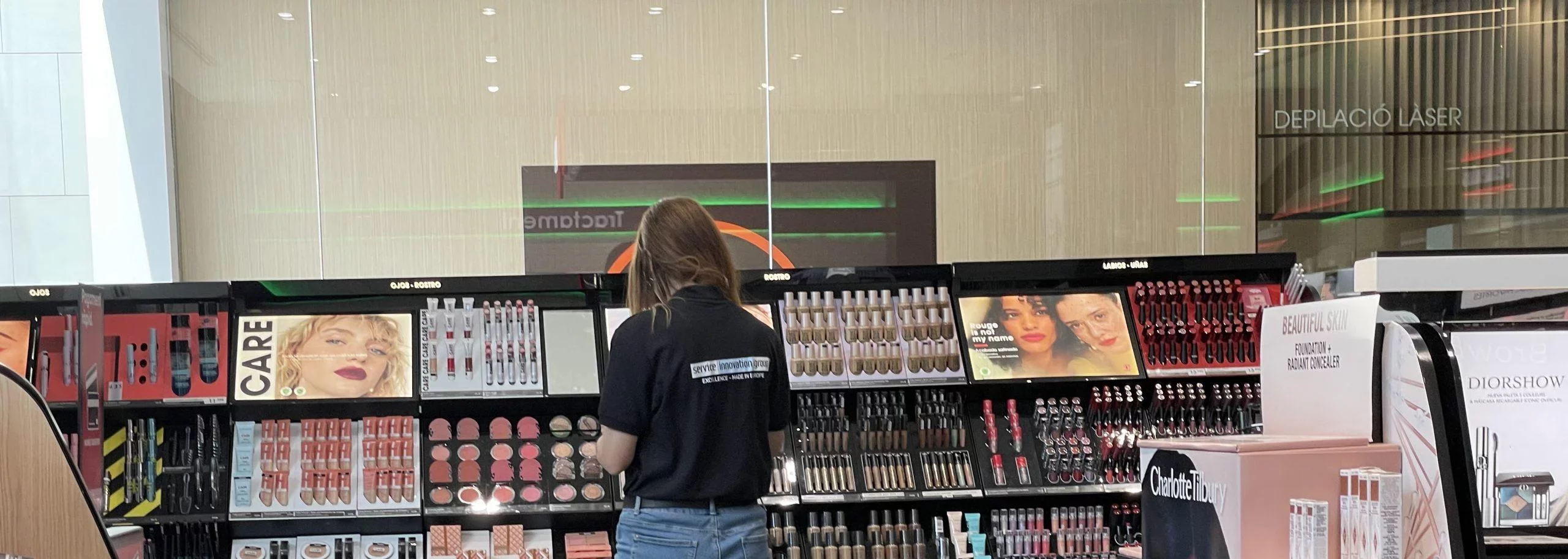Why a Well-Executed Planogram Makes All the Difference?
In retail, nothing happens by chance. Every product, every shelf, and every inch of space matters. A planogram is the roadmap that defines how each product should be displayed to maximize visibility and guide the shopper’s purchase decision. When it’s not followed, the effects are immediate: confusion, lost sales, and a disorganized shopping experience. In short, a poor planogram is like a badly drawn map — no one reaches the right destination.
Common Challenges When Implementing Planograms In-Store
Designing a planogram is one thing. Making sure it’s executed correctly in-store is another. Marketing teams may plan every detail, but real-life retail operations come with their own challenges:
- Lack of operational time: store staff often prioritize customer service or basic replenishment.
- Placement errors: products out of sequence or positioned in ways that break shelf logic.
- Out-of-stocks or overstocks: planning doesn’t always align with actual availability.
- Lack of visual control: without audits or real-time reporting, it’s hard to spot deviations quickly.
When that happens, visibility drops, rotation slows down, and the brand loses presence. A planogram without control ends up being just a concept on paper.
Key Steps to Ensure Flawless Execution
Turning a planogram into measurable results requires method, agility, and follow-up. These are the keys that make the difference on the ground:
- Specialized teams: professionals trained in planogram implementation ensure consistent visual standards across stores, no matter how complex the setup.
- Real-time digital supervision: geo-tagged photos and checklists make every step verifiable and traceable within minutes.
- Constant updates: planograms should be reviewed with every product launch, assortment change, or seasonal campaign.
- Issue management protocols: when fixtures, stock levels, or spaces change, rapid response keeps the shelf logic consistent.
At SIG, we work under these principles: precision, speed, and total control at the point of sale. Because it’s not just about placing products — it’s about doing it right, and on time.
The Role of Field Marketing in Planogram Execution
A planogram is useless if it’s not executed accurately in-store. That’s where Field Marketing comes in — the bridge between brand strategy and real in-store execution. With trained teams, quick response capabilities, and instant reporting, brands can ensure every display is exactly where it needs to be.
At Service Innovation Group Spain, brands trust us to execute, audit, and optimize their retail presence. We understand the processes, timing, and standards of each retailer — allowing us to deliver agile, coordinated, and error-free execution.
Practical Example: When Execution Changes Everything
Imagine a cosmetics brand launching a new product line. The planogram specifies placement on the middle shelf next to category bestsellers. But in-store…
- The products end up on a lower shelf.
- The shopper doesn’t notice them and chooses another brand.
- The launch loses impact right at its most critical moment.
With a specialized field team, the planogram is executed precisely as designed. The result: greater visibility, faster rotation, and an execution that multiplies the impact of the launch. That’s where strategy turns into real sales.
How to Measure Planogram Effectiveness
Measuring execution isn’t just about validation — it’s about learning what works and what can be improved. Key performance indicators include:
- Compliance rate: percentage of stores where the planogram was executed correctly.
- Sell-out growth: additional sales generated after implementation.
- Execution time: how quickly materials are installed after delivery.
- Resolved issues: percentage of errors corrected the same day.
This data provides a clear picture of each campaign’s performance and helps optimize future rollouts. At SIG, that visibility is total — every action, every photo, every result is validated in real time.
The Value of a Specialized Partner
At Service Innovation Group Spain, we know that the difference between a planogram on paper and one in-store comes down to execution. Our Field Marketing and Trade Execution teams make sure every shelf, fixture, and display reflects exactly what the brand intended.
We handle material reception, assemble fixtures, and update planograms in record time. Plus, we provide visual, geo-located, and traceable reports that ensure total transparency at every stage. In other words: we make sure your brand looks exactly the way it should.
Frequently Asked Questions (FAQ)
Because it guarantees order, consistency, and visibility in-store. A well-executed shelf directly translates into higher sales and a better shopping experience.
It depends on the retailer, but ideally, specialized external teams — like those at SIG — ensure consistent, fast execution with immediate reporting.
Substitution or temporary redistribution protocols are applied to maintain shelf logic and prevent empty spaces that disrupt the shopper’s experience.
At least once a year, though in fast-moving categories like cosmetics or technology, updates are recommended with each product launch or seasonal campaign.
Conclusion
A well-executed planogram is what turns strategy into results. At Service Innovation Group Spain, we bring plans to life with precision and speed, ensuring every detail counts. Because we don’t just execute — we make sure your brand looks exactly as it should, in the right place, at the right time.

